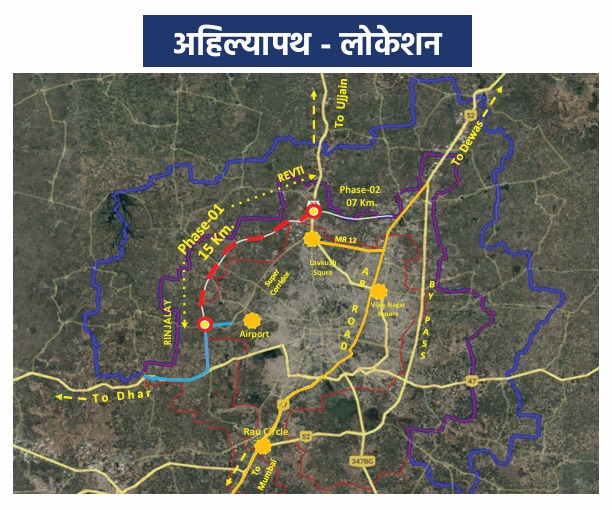In a significant move towards enhancing the nation’s infrastructure, the Union Cabinet has given the go-ahead for a 309-kilometer-long new railway line between Indore and Manmad. This ambitious project, valued at ₹18,036 crore, is set to revolutionize connectivity in Central India, providing a direct link between two major regions and significantly reducing travel time and transportation costs.
The Strategic Importance of the Indore-Manmad Railway Line
The Indore-Manmad railway line is not just another addition to the country’s extensive rail network; it is a strategic infrastructure development aimed at unlocking the economic potential of Central India. This new route will serve as a vital corridor between the Western and Central parts of the country, facilitating the seamless movement of goods and passengers.
Currently, the goods and passengers traveling between Indore and Manmad must take a circuitous route, which increases travel time and costs. The new railway line will reduce the distance between these two cities by approximately 171 kilometers, leading to a significant reduction in travel time by around seven hours. This is expected to greatly benefit the industries in Indore, Dewas, Ujjain, and the surrounding regions by providing them with more efficient access to the ports on the Western coast, such as Mumbai and JNPT (Jawaharlal Nehru Port Trust).
Economic and Social Impact
The Indore-Manmad railway line is anticipated to have a far-reaching impact on the socio-economic development of the region. The project is expected to generate substantial employment opportunities during the construction phase and beyond. According to estimates, the project will create approximately 51.6 lakh person-days of employment, providing a much-needed boost to the local economy.
Moreover, the new railway line will enhance the agricultural and industrial output of the region by improving access to larger markets. This is particularly important for the agrarian economies of Madhya Pradesh and Maharashtra, where farmers will benefit from reduced transportation costs and better access to national and international markets.
The project will also contribute to environmental sustainability by promoting the use of railways, which is a more energy-efficient and less polluting mode of transportation compared to road transport. The shift from road to rail is expected to reduce carbon emissions and alleviate traffic congestion on the existing road networks.
Real Estate and Industrial Growth in Indore and Pithampur
One of the most significant impacts of the Indore-Manmad railway line will be on the real estate and industrial sectors in Indore and Pithampur. Indore, already a thriving hub of commerce and education, and Pithampur, known as the ‘Detroit of India’ for its extensive automotive and manufacturing industries, are poised to benefit immensely from this new connectivity.
The reduced travel time and improved logistics will make Indore and Pithampur even more attractive to investors and businesses. The real estate market in these regions is expected to witness a surge in demand as better connectivity leads to increased commercial activities and higher demand for residential and commercial properties. Areas around the new railway line are likely to see an appreciation in property values, making them lucrative investment opportunities.
For Pithampur, the railway line will enhance its position as a major industrial hub by improving the efficiency of supply chains. Industries will benefit from quicker and more cost-effective transportation of raw materials and finished goods, further boosting the region’s industrial output. This could also lead to the expansion of existing industrial units and the establishment of new ones, thereby creating more jobs and driving economic growth.
Boosting Regional Tourism
The new railway line is expected to provide a significant boost to tourism in the region. Indore, known for its rich cultural heritage and culinary delights, and Manmad, a gateway to pilgrimage sites like Shirdi, are both popular tourist destinations. The reduced travel time and improved connectivity are likely to attract more tourists, thereby contributing to the local economy.
Conclusion
The approval of the Indore-Manmad railway line is a landmark decision that underscores the government’s commitment to strengthening the nation’s infrastructure. This project is not just about laying tracks; it’s about laying the foundation for a more connected, prosperous, and sustainable India. As the project moves forward, it promises to bring economic growth, employment opportunities, and enhanced connectivity to millions, marking a new chapter in the development of Central India.
This ₹18,036 crore investment is a testament to the vision of a modern, connected India, where infrastructure drives growth and prosperity for all.




